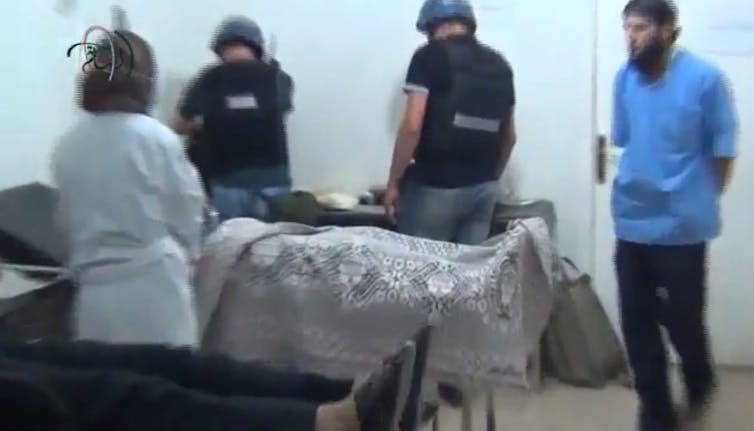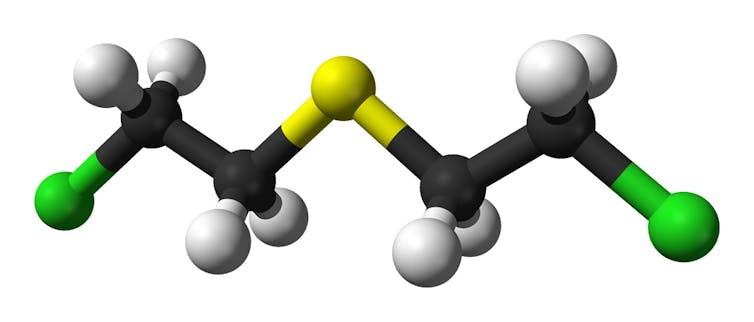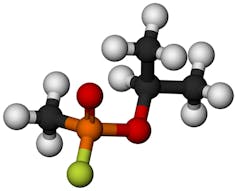It’s been a little more than a week since reports surfaced of a large-scale chemical weapon attack in Syria. Governments in Europe and the United States have accused the Syrian government of attacking their own people, while the Assad government has pointed the finger at its opponents.
The United Nations currently has inspectors in Damascus, who have been tasked with finding out if chemical weapons were used and, if so, by whom.
It’s not a simple matter to decide if a chemical attack has occurred. The inspectors will be looking for evidence to support or refute one of several possibilities:
- a non chemical cause, such as mass hysteria
- a chemical cause not related to chemical weapons
- an attack using chemical weapons, but an improvised delivery system
- a military chemical weapons attack using artillery or bombs.
In media interviews, former weapons inspectors have said that the symptoms are in line with a nerve agent such as sarin rather than the effects of a blistering agents such as sulphur mustard.
Looking at video purported to be from the site (see below), there is none of the usual blistering associated with mustard gas attacks, although that is not always immediate, while the combination of contracted pupils, uncontrolled mucus from nose/mouth and ataxia (uncoordinated movements) would suggest nerve agent or similar poisoning.
What are nerve agents and how do they work?
Nerve agents are organophosphorus compounds that interfere with the transmission of nerve signals. Nerve signals are how the brain receives information and sends commands to the body. Signals are electrical impulses that travel along cells such as those in the spinal cord. When the signal reaches the end of one cell it must cross a gap, called a synapse, to reach the next nerve cell.
The signal is transmitted across the synapse by chemicals called neurotransmitters. These are released from the end of a nerve cell, travel across the synapse and bind to a protein switch on the beginning of the next nerve cell, which in turn generates a new electrical impulse.
The transmission process does not destroy the neurotransmitter. Instead, the neurotransmitter will remain in the synapse, binding to the switch over and over again until it is either destroyed or removed from the synapse.
One neurotransmitter, acetylcholine, is destroyed by an enzyme called acetylcholine esterase. Nerve agents bind to and block the action of acetylcholine esterase. Without the enzyme’s action, the amount of acetylcholine in the synapse never decreases.
Large amounts of acetylcholine repeatedly activate the protein switch leading to a constant stream of nerve signals.
If the nerve is one leading to a muscle, the continuous nerve signals prevent the muscle from relaxing. In fact, the muscle is continuously activating (contracting). When this occurs in the muscles that control breathing, they can only breathe in (the diaphragm contracts when we breathe in). As the victim cannot breathe out they asphyxiate.

Causing victim’s nerves to constantly signal to contract muscles leads to the symptomatic contraction of the pupils and “twitching” seen in cases of nerve-agent poisoning. In practice, this effect is usually seen in the later stages of poisoning, earlier symptoms being a runny nose and confusion.
There are several nerve agents that have differing physical and chemical properties. Some have the consistency of motor oil, while others will readily evaporate at room temperature. All are lethal in very small doses. A few tenths of a gram will kill an average man. Lethal exposure can be via ingestion (eating/drinking), skin contact with the liquid or by breathing in the agent as a gas.

Determining the presence of nerve agents
The UN inspectors will face several problems determining what happened in Damascus. Nerve agents are unstable in the normal environment and will break down readily. The breakdown products are non-toxic and not particularly notable in the environment of an industrial civilisation. This means it will be very difficult, if not impossible, to detect the use of nerve agents in the air or in substances on the street.
All known military nerve agents are organophosphorus compounds to the extent that certain groups of phosphorus compounds are outlawed for production and storage by the 1993 [chemical weapons convention](http://www.opcw.org/chemical-weapons-convention/annex-on-chemicals/b-schedules-of-chemicals/schedule-1/](http://www.opcw.org/chemical-weapons-convention/annex-on-chemicals/b-schedules-of-chemicals/schedule-1/ ) (which came into force in 1997, but Syria is not a signatory).
Many of the materials that are necessary, known as precursors, for production of the lethal compounds are similarly outlawed. But some precursors are themselves useful industrial chemicals, with uses in agriculture and chemical processes.
It is unlikely that the inspectors will find residual nerve agent in the environment. The more volatile agents would have blown away with the wind within hours of the incident. Compounds such as sarin break down within one and two days in the open.

Similarly, the compounds are metabolised in the body. A blood sample taken from someone several days after receiving a non-lethal dose will probably not contain any nerve agent. It is also important to remember that the toxic dose is minute compared with the mass of the body. Samples taken a day after the Tokyo subway sarin attack contained ~100ng/mL (approximately 1 part in 10 million).
Instead of looking for the agent itself, the inspectors test for a metabolite (breakdown product) of the compound. The metabolites that will be sought are specific and can be used to identify exposure a particular compound.

This would be achieved by taking urine or blood samples from victims and sending those to a laboratory equipped with appropriate gas or liquid chromatographs (equipment which separates mixtures) connected to sensitive mass spectrometers.
It is also possible to detect the nerve agent bound to the acetylcholine esterase. This method is similar to that for detecting metabolites. It potentially could be used up to two months after an attack. But each of these methods relies on a sufficiently high dose being received by the victim, which clearly suggests that they would be killed by the effects of the nerve agent and may have since been buried.
Other physical evidence the inspectors will look for will include expended shell or bomb casings that could have contained chemical weapons. They will also study the pattern of injury and death that the incident left on the ground. Release of a compound from containers at ground level will have a different dispersion from artillery bursting in the air.
If the UN inspectors can get sufficient blood and/or urine samples from victims, they should be able to determine the cause of the incident.
But if a chemical weapon attack is confirmed, it may be somewhat harder to positively identify the perpetrators.

